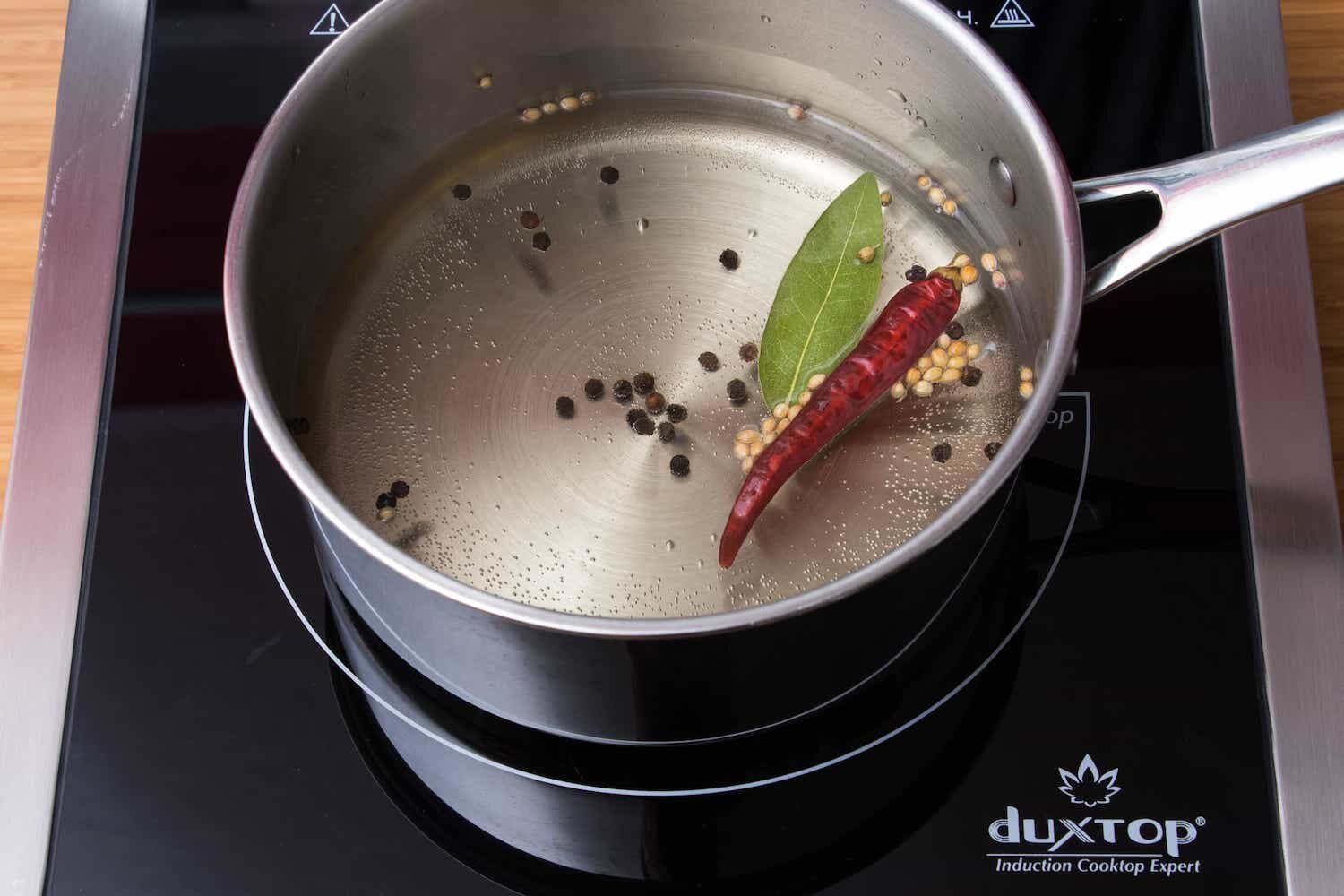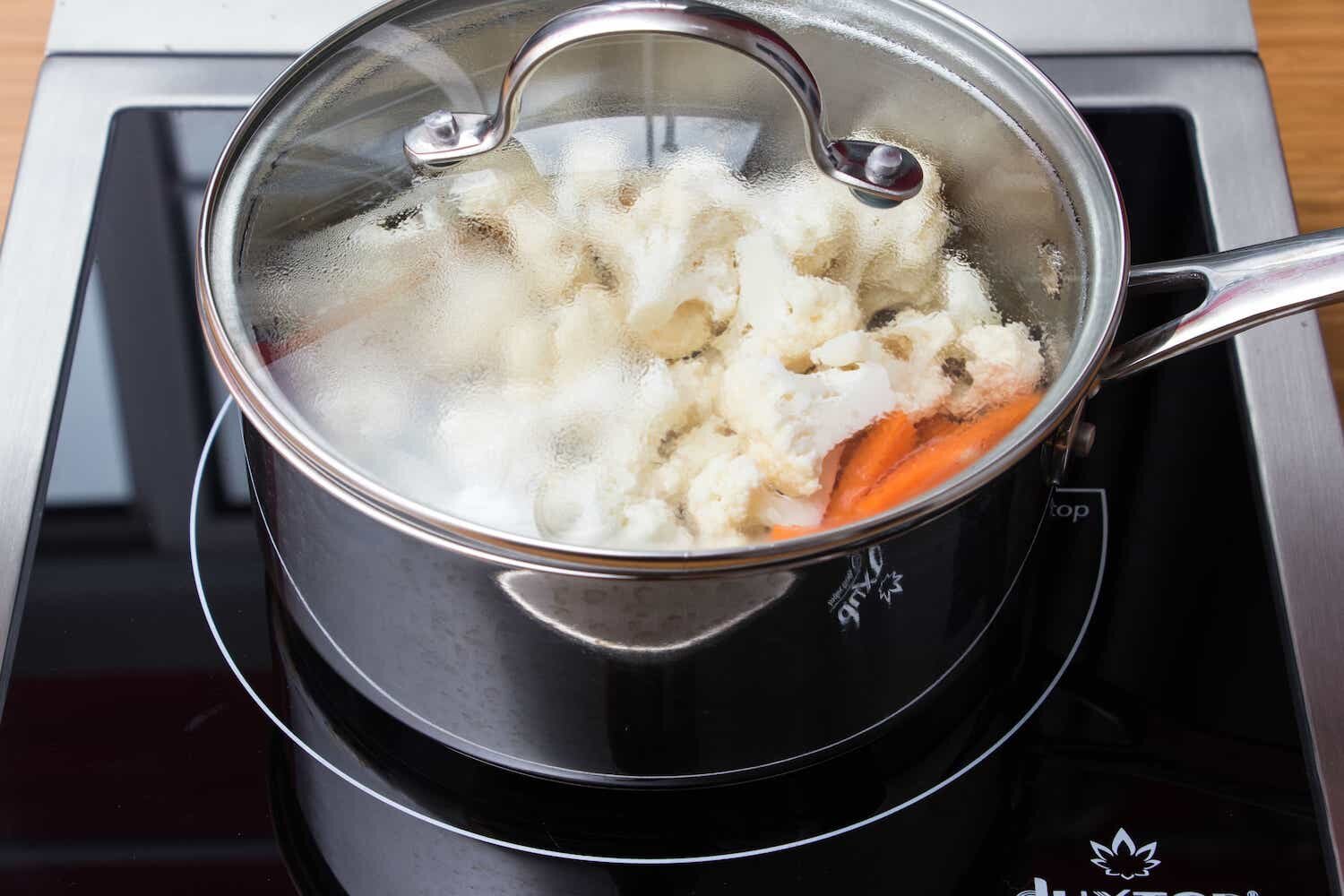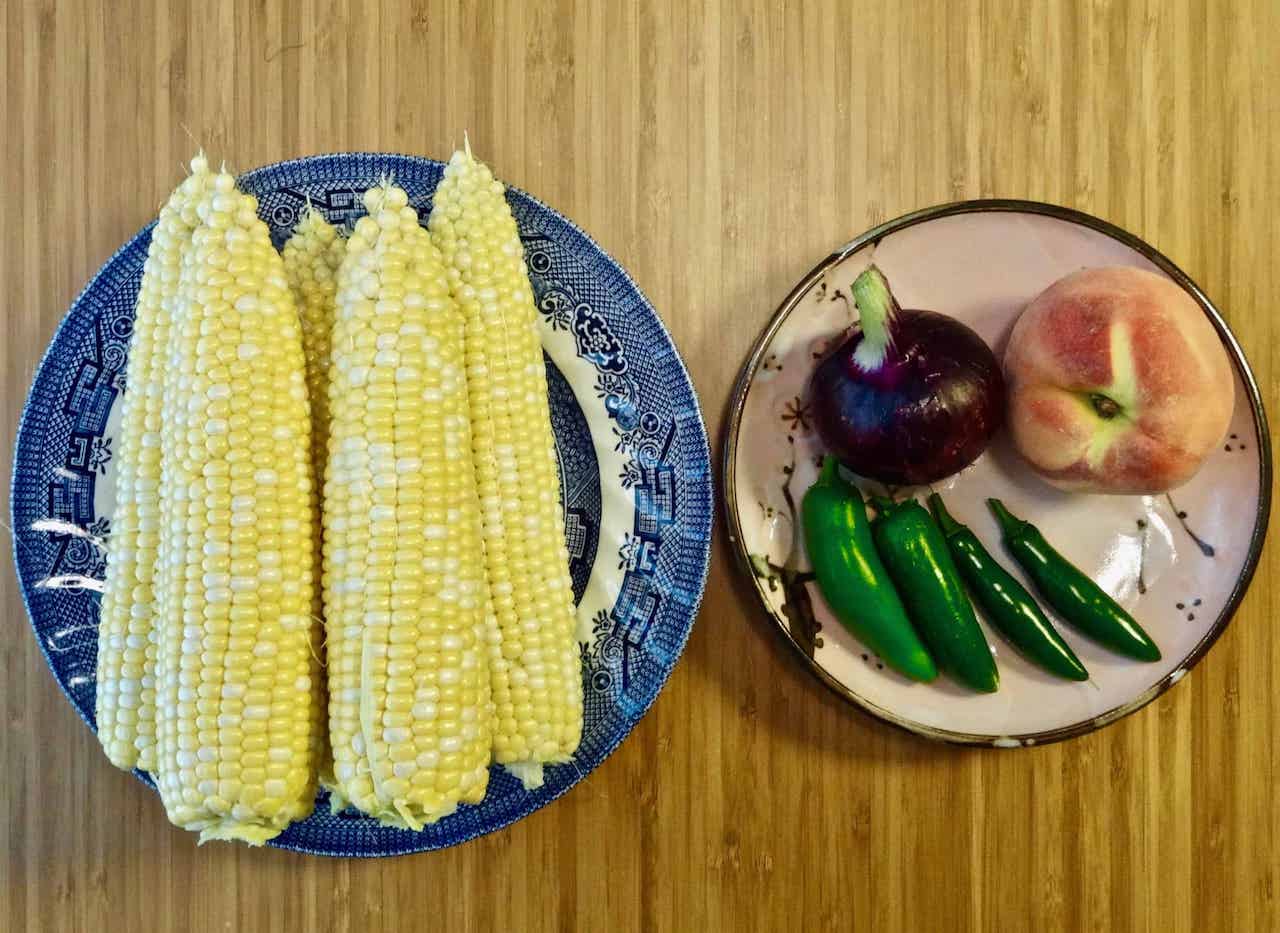A Simple Recipe for Cauliflower Vinegar Pickles

Vinegar-pickled cauliflower, carrot, and celery
Vinegar-pickled vegetables are easy to make and I always have some in my fridge along with jars of fermented vegetables. In contrast to fermented pickles where the acidity is produced by lactobacillus fermentation, vinegar pickles - often called ‘quick pickles’ - are made simply by covering the vegetables with a vinegar brine and stored in the fridge. There are many recipe variations out there but it’s good to start with one recipe as a baseline and adjust the ingredient ratios to please your own taste. Here I decided to use cauliflower because I recently tasted a good version at Aloha Beer Co in Honolulu (I usually make vinegar pickles with red onions or cucumbers). Tart pickles make a great accompaniment to any foods that will benefit from a sharp counterpoint. There are many classic examples of such pairings out there: capers on pizza, dill pickles on burgers, sauerkraut on hot dogs, pickled daikon on bahn mi, rice and egg with kimchi. Condiments like ketchup, mustard, relish, yogurt, lemon juice, and hot sauce all serve the same purpose of accenting and complementing the main elements.

Pickled red onion
This basic method calls you to heat the brine ingredients (vinegar, water, salt, sugar, spices) until everything is dissolved. The vinegar-water ratio is flexible depending on the preferred acidity. I usually make a 1-1 brine with rice vinegar, but here I made it slightly less tart because of the relatively subtle flavor of cauliflower. Other vinegars like apple cider or distilled can be used as long as you are aware of the varying acidity levels found in different vinegars. The salt and sugar amounts will also make a difference so you can change the amounts depending on how sweet and salty you like these pickles. The seasonings are completely interchangeable. I almost always try a different blend of spices each time, and it always tastes good. These pickles involve very little time and monetary investment so it’s easy to experiment with any ideas you come up with. One optional step is to blanch the vegetable before adding the brine. I usually don’t precook the vegetables but several recipe sources for cauliflower pickles instructed a quick blanch. Instead of doing this separately, I decided to toss it in the pan with the brine and let simmer for 1 minute. I’m not sure if this step was necessary - you can decide for yourself if you think it’s worth doing. You can eat this pickle immediately, or place it in the fridge after cooling where it will keep for many months without a problem. This recipe fits a 1 quart Mason jar easily.
Cauliflower Vinegar Pickle
250g cauliflower florets (about 1/2 of a large head)
1 carrot, in sticks
1 stalk celery, in sticks
1 cup water
3/4 cup rice vinegar
1 tablespoon salt
1 tablespoon sugar
2 garlic cloves
1 dried cayenne
bay leaf
black pepper
coriander seed

All ingredients prepped

Vinegar, water, salt, sugar, spices - simmer and stir until dissolved

Add cauliflower, carrot, celery - cover and simmer 1 minute

Pack everything into a 1 quart Mason or Ball jar, let cool, cover, and refrigerate

All dry ingredients on a board







































































